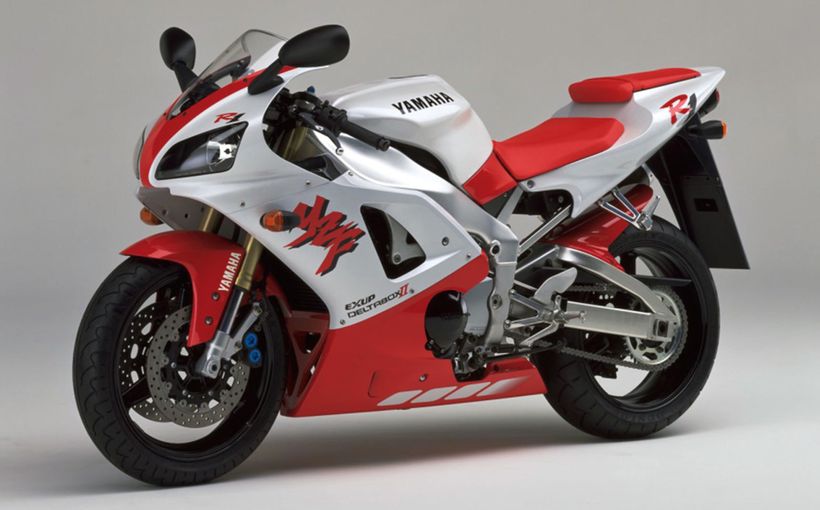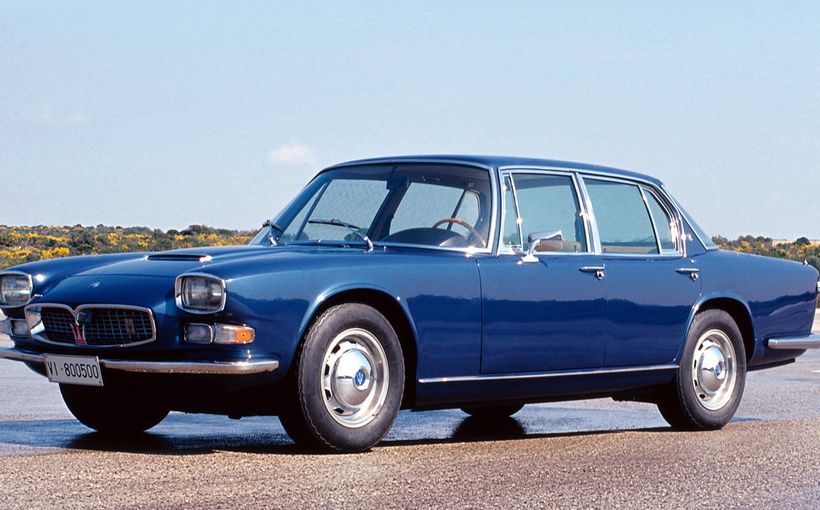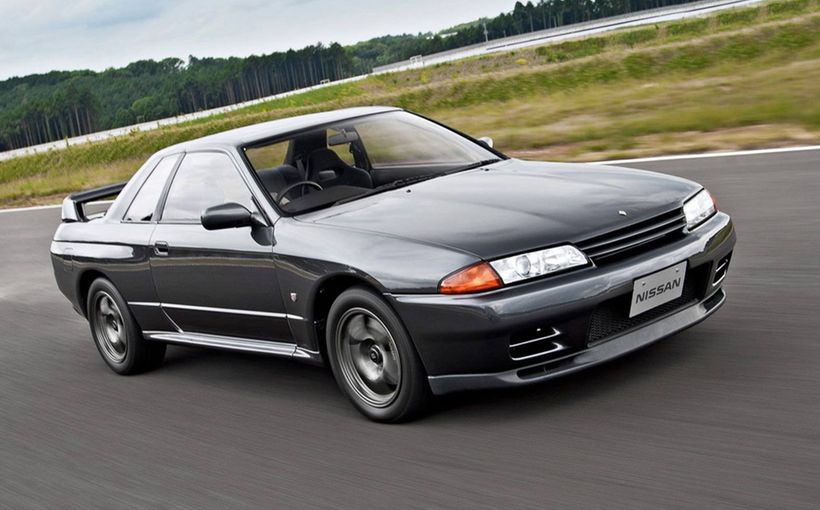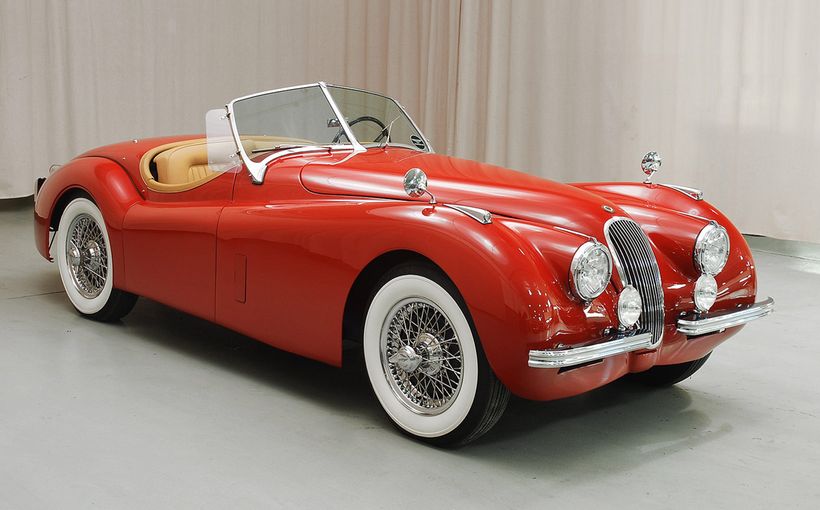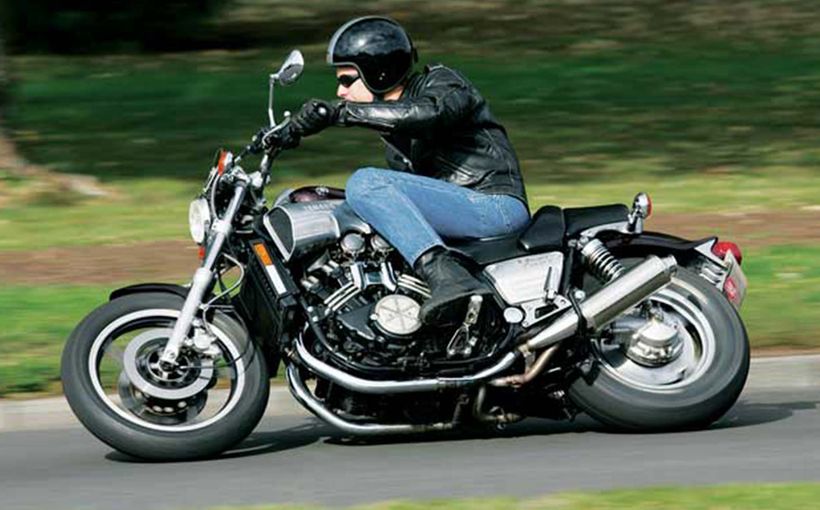Austin A30 and A35: austerity thy name is Austin

Austin’s first ever monocoque was the A30, the star of the 1951 London Motor Show in Earls Court. Announced as the ‘New Austin Seven’, the A30 was essentially a downsized Austin A40 in both style and mechanicals. The A40 Devon was the first Austin to use what soon became known as the A-Series engine. The A30 was given a smaller 803cc version, developing all of 28 horsepower – hence ‘A30’.
In 1952, Britain’s two largest automotive companies merged to create the British Motor Corporation. Unquestionably, Austin fared better than Cowley-based Nuffield because Leonard Lord, chairman and managing director of Austin, was the first BMC boss. Jeff Daniels writes in his excellent British Leyland: the truth about the cars:
…the stage was set for a long ‘them and us’ period of confrontation between Cowley and the Austin headquarters at Longbridge when it was in the general interest to get the merger working smoothly with the utmost speed.
This move would usher in an era of badge-engineering to rival that of General Motors. It didn’t make sense to create unique vehicles for each franchise, so in much the way that basic body designs were shared between, say, Chevrolet and Pontiac, it was clear that there need not always be unique Austins and Morrises, nor MGs, Wolseleys and Rileys. But the separate dealerships for each marque demanded a degree of differentiation.

The first fruit of the new policy was Gerald Palmer’s Wolseley 4/44 and MG Magnette siblings, launched in 1952 and 1953 respectively. Although the original plan had been for these cars to share their bodywork, Palmer’s insistence that the MG should have a lower ride height, led to a large number of different panels being required and the cars offered very different personalities. The staid Wolseley with its single-carb edition of the 1.25-litre MG XPAG engine (as used in the MG Y-Type saloon) and column gearshift had its merits. But the Magnette – the first car to use the new 1489cc BMC B-Series engine – with its rakish style, useful 60 brake horsepower and slick floorshift was a true sports sedan and every bit as luxurious with its walnut and leather as the 4/44.

The 4/44 and Magnette kept Wolseley and MG dealers busy writing orders. (By the end of the decade BMC had foisted on the public no fewer than five versions of the Farina Austin A60!)
Meanwhile, back at the entry level to the BMC range, the presence of both the Morris Minor and Austin A30 proved useful. Alec Issigonis’s quite radical Minor with its excellent chassis was constrained by an old-fashioned and underpowered side-valve engine. By comparison, the A30’s overhead-valve A-Series engine was a veritable powerhouse. So each car had its strengths and weaknesses.
It was the little Austin that offered the entry point into BMC’s 1952 range of cars, being priced at £504 including tax, compared with £530 for the Minor. The sit-up-and-beg side-valve Ford Anglia cost £445.

The A30 proceeded to outsell its new cousin and BMC management decided to drop the Seven appellation. They also decided to install the 803cc engine in the Minor, removing the Austin’s major advantage.
For many though, the A30 seemed more modern with its completely faired-in guards and scaled-down big car appearance.

The A30 was initially available only as a four-door sedan but a two-door model was introduced in the UK in October 1953. A van and Countryman wagon followed in 1955.
There was a generous amount of room for four adults and a closer look at the A30 reveals details such as external door hinges to maximise interior space. The instruments were mounted centrally so that all passengers could applaud the little Austin’s performance.
It was in 1956 that my so-English father bought his grey-blue and only slightly used 1955 Austin A30. The skinny wheels were cream, which made a nice contrast. The majority of A30s I saw in those days (all having cream wheels) seemed to be either blue-grey like ours or fawn; I know there were other shades but I don’t remember them.
Even as a six-year-old, I wondered why Dad hadn’t bought a Morris Minor or – even better – a Fiat 1100 or a Ford Prefect, or, more perversely a Citroën 2CV. But I guess his leaning was more towards Austin than Morris in the way that Australian motorists were already choosing Holden over Ford or vice-versa. I wouldn’t have known the word ‘conservative’, but that was how I viewed his new car. (By contrast, the arrival at home of a Morris 850 ‘Mini’ five years later had us almost hysterical with excitement and all the Mini drivers waved at each other.)
The A30 was the second car, the one he would drive to work, while my mother hammered the failing 1950 Armstrong Siddeley Whitley around the streets of Glen Iris and Camberwell. Our family was only a year or two in advance of the gathering trend towards two-car families in the leafier suburbs.

This car was so basic: it was postwar austerity on wheels. Naturally, there was no synchromesh on first gear and the rear windows were fixed (no fun for kids!). The front windows were lifted up or pushed down manually without the aid of winders (a-la the E-Series Vauxhalls of the same era).
Of course, for many customers, the Austin A30 proved to be the ideal first car (in both senses of ‘first’). One of these was young Jackie Stewart. I have no doubt that he drove his mid-green A30 much faster than Dad drove ours. Stewart’s parents owned a car dealership and doubtless helped their younger son to finance this car. It was soon kitted out with Hunting Stewart tartan seat covers and an enamel lion rampart above each front wheel arch.
Even in 1956, the A30 seemed pitiably slow. There was a great long lever protruding from the floor to change gears. As I recall, Dad would change from first to second just below 10 miles per hour, then into third at about 15 and fourth at 25. It would cruise at 45 or so and its top speed was an indicated 65. Gearing was 12.62 miles per hour per 1000rpm in top.

By the time my parents had built a holiday house at Lorne, the A30 had been traded on a new Cherry Red Morris 850. Just as well, because it would have been tedious business indeed making the 95-mile trip, including a long stretch of the new Geelong Road in the Austin. (All this puts me in mind of the suitability of the Holden 48-215 for Australian touring distances. Small cars of the first postwar decade – with rare exceptions such as the Beetle and Fiat 1100 – were generally afflicted with cruising speeds of 50 miles per hour or less. The Mini was pretty good on the trip to Lorne and back, sitting on 55-60 and capable of an indicated 76 – actually 73, as timed against the ubiquitous mile posts.)
Road testers of the 1950s liked to describe the A30’s A-Series engine as ‘willing’. But drivers of today would be totally confounded. Modest ascents required changing down to third, which meant a speed of no more than 35 or a screaming 40. In 1968 I had just acquired a 1960 Fiat 1100 103D. The weekend I got it back from having the engine reconditioned, I was limited to a maximum of 50 miles per hour. My mate Hugh had a fawn A30. I gave him a start and chased him on a pre-planned race route, easily catching him. Fifty miles per hour on any given suburban side street amounted to quite an achievement in an Austin A30.
Of course, we’d all changed our thinking by 1968.

Cars like the A30 were conceived in the days before Britain had motorways. Typical cruising speeds in the decade after the end of World War Two were 40-45 miles per hour. The aforementioned Wolseley 4/44 was highly praised in The Autocar for its ‘natural cruising rate [of]..60 miles per hour’.
In continental Europe, expectations were different with long stretches of Hitler’s autobahns and Mussolini’s autostrada. The 1953 Fiat 1100 with its tall top gear could reach 75 miles per hour and cruise at upwards of 65 through flat country. And the Beetle – even in 36-horsepower guise – could cruise at its maximum 68 under the same conditions.
Nevertheless, the English loved both the Minor and the A30. The little Austin – later dubbed ‘The Peanut’ by British enthusiasts – served as an apprenticeship car for plenty of aspiring young Jackie Stewarts. James Hunt apparently loved his. Then there was the black-eyed young bloke from Melbourne’s north-eastern suburbs who reckoned it might go quite well with a Holden 186 engine beneath the neat little bonnet – endowing the flying A mascot with a whole new meaning!

The 15 November 1955 edition of Motor Manual ran a comparison test between the Austin A30 and the 1939 Austin 8. While the postwar model could achieve a maximum of 64 miles per hour, the older model could not quite obtain a mile a minute. Checking out the new car price list at the back of this edition, I note that only two cars were shown as having a slower top speed than the A30 – the Citroën 2CV at 45 and the Fiat 600 at 61. Indeed, 64 seems typical of the class, accounting for the Morris Minor (with the same engine but different gearing), Renault 4CV and Standard Eight.
As for prices, the A30 cost £779 as a two-door and £758 as a four-door, but I suspect they got these the wrong way around, the two-door being, if anything, even more basic. The Minor cost £717 as a two-door convertible, £774 as a two-door sedan and £818 as a four-door. Surprisingly, the 2CV with all its 12 brake horsepower commanded £782. The Ford Anglia was £822, the Prefect £873, the Standard Eight £767 and the (10 RAC horsepower) Cadet headed up all these at £894. The Fiat 1100 was really in a different class, costing £994. The Volkswagen was £101 less expensive!
Acceleration times are fascinating. According to Motor Manual, the A30 could reach 50 miles per hour from rest in 22.1 seconds but the English magazine The Motor claimed 29 seconds – quite a disparity. Top speed in third was 42. The Holden managed 13.3 seconds right on the cusp of the change into top. Among littlies, the Beetle was swiftest at 16.4 seconds, thanks to its third gear maximum of 60-plus, followed by the Fiat with a time of 17 seconds flat, after a gearchange into top at 47 or so. Quickest of all cars listed was the Austin-Healey 100 (four-cylinder) with 7.5, no time being recorded for the fabulous Jaguar XK140.

In September 1956, the A35 replaced the A30. The major changes were the use of the much more powerful 948cc version of the A-Series engine and a remote gearchange. Taller gearing gave the A35 a much better cruising speed. Jackie Stewart swapped his green A30 for a powder blue A35. ‘John Lindsay was my passenger on some nightmare trips connected with shooting,’ Sir Jackie recalled:
There was no speed limit then. He would time me with a stopwatch, sitting in the passenger seat. I could reach Stirling from our garage – that’s about 39 miles – in 39 minutes.
For some reason, BMC gave the Minor 1000 37 brake horsepower and the A35 34. But, regardless of the number, both cars were in a different performance league from their 803cc predecessors, being somewhat swifter than an 848cc Morris 850 ‘Mini’.

It’s tempting to conclude that the A35 and Morris Minor 1000 constituted the point at which British small cars grew up. I remember covering one long trip in the passenger seat of a Minor 1000 with the speedo wavering at around 75 for most of the distance.
The Austin A35 was succeeded in late 1958 by the Austin A40 Farina (and I myself owned one briefly in 1971). Early design sketches of this car have it labelled as an Austin A35. It is a curiosity of BMC’s badge-engineering that this elegant successor to the A30/A35 was never invited to be a Morris, Wolseley, MG, Riley or Vanden Plas.
We may look back smilingly on the humble A30. But in that era of austerity that marked postwar Britain for upwards of a decade and our own country until at least 1950-52, motorists were grateful for what they could get. It’s worth remembering that, until GM-H was able to move close to meeting demand for the Holden 48-215, the top-selling car in Australia was the A30’s older sibling, the Austin A40 Devon.




